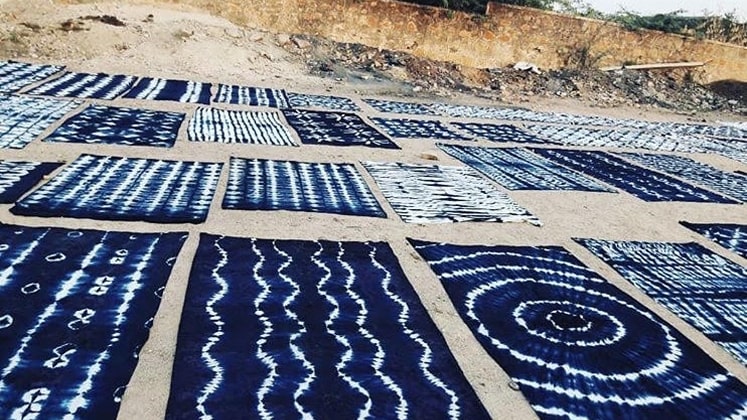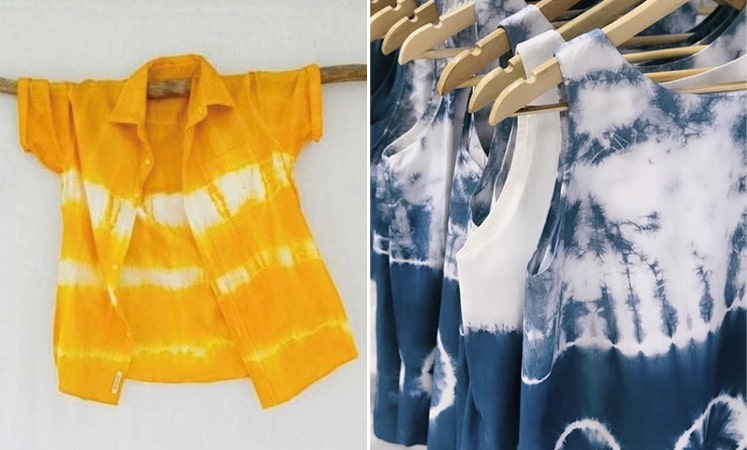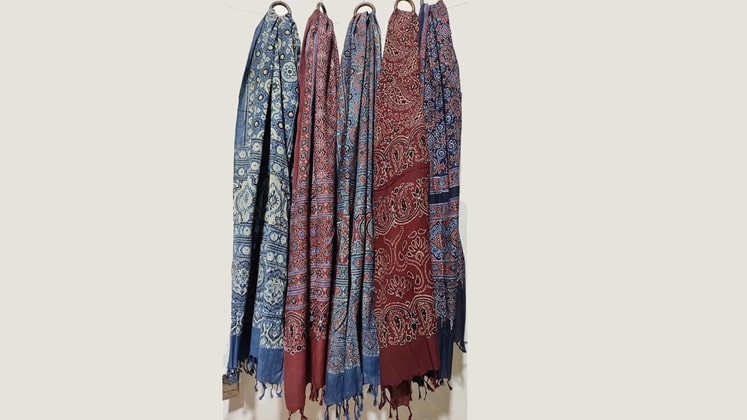With the pandemic shuffling the conventions, do handmade and handblock techniques for clothing and apparel hold any virtue within the manufacturing domain? How are the manufacturers and beholders of the traditional practices holding up during these unprecedented times?
Udit and Hemant Sethia started their journey with handblock printing in 2001 under the banner of Jai Texart. Over the years, they have been focusing on offering the craft in its purest form the world over. Today, they have been able to build a sustainable yarn to fashion value chain that not only safeguards the integrity of the craft, but also the economic wellness of the craftspeople by assuring them steady income through the year. With their business model, they have been able to make a huge positive impact on the rural economy of India. Well-known fashion brands, retail chains, garment manufacturers and wholesalers spread across 65 cities of India make up their domestic customer base. On the other hand, they have an international customer base from over 13 countries of the world and their global footprint was expanding rapidly owing to sustainable fashion being the need of the hour all across the globe.
“Since the onset of the pandemic, our offline sales during June 2020 were 30-35 per cent lesser than our usual sales from the pre-COVID-19 era. Whereas our online sales and queries shot up and were 70-75 per cent above our usual sales. However, business was completely null and void during April and May. Apart from domestic sales, we significantly account for export earnings in the form of handmade material exports and workshops, wherein we train the brands or designers for handmade practices so as to help them set their own manufacturing units. Through these avenues, we were able to get very good orders and sometimes in advance also. But orders have declined now. Most of our international customers have offered support for artisans and have honoured us with small orders. However, the workshops are totally closed for now and that big chunk of revenue is completely on a stop until the situation gets better,” Hemant informs.
Also Read: Click & shop: Will the industry take to online ordering for fabrics and apparel?
Progressing through the testing times
“Business will be good after COVID-19. I feel that the pandemic has actually shuffled the industry and there is opportunity for entrepreneurs. We have not altered our working style; just that we have started to focus on our online presence, more at the moment. During the lockdown, we were not active and just like other businesses within our category, 2 months were a complete shutdown. But, what is noteworthy is that we have received orders during the lockdown from Pakistan, all across India and Vietnam. Now, our task is to deliver the orders real soon fighting the logistics and other pandemic-related production challenges. In India, our knowledge in handmade keeps our boat floating and that, I believe, will be helpful in fetching business just like always; maybe the start will be slow, but we will gain back the orders,” mentions Nitesh Karnawat, Owner of Nithas Handcrafted (the house of handcrafted fabrics).
Nithas is a start-up within the handmade space, and since the last 2 years, they have been supplying handmade, handcrafted fabrics and garments to all countries across the globe. Retail and bulk exports are their major source of income and they are soon going to launch their own colour dyes. With tie-and-dye being their strength, they are most sought after by international brands dealing with athleisure, casualwear, resortwear and the likes.
Looking for a breather
Bharat Jain, Owner of BharateshVaibhav–Hastkaar, is an engineer by profession, but he took to weaving more as a hobby and then simply went on to put up his own unit in Ajmer a few years back. From tackling his looms to training his staff and then looking after marketing, he has been singlehandedly supervising every task. He is an Indian Government’s award winner for his designs and patterns. “It took me a lot of time to convince customers the merits of handmade. I majorly deal with Ajrakh fabric and I am involved in my processes very intrinsically. From procurement of raw materials to the final production, as a weaver it is not easy for us to create a big market for our products within a few days or months. However, I was getting orders pre-COVID-19, which completely stopped during lockdown and now with the lockdown being lifted, completing old orders is a challenge as many labourers have gone back to their native towns,” Bharat explains.
He is not too optimistic about the coming months. He has actively taken to social media through his brand page to explain the community about the benefits of handmade and promotes his products exhaustively to fetch big export orders. But for him, the market has been slow.
“We had developed a customised software system 4 years back, using which our customers without travelling to Jaipur could select the fabrics or products they wanted to order. This is going to be very helpful in the days to come. In the post-pandemic world, the immediate negative effect that I can predict on the handmade industry is the lack in order fulfilment. This is because a lot of artisans and supporting workers have gone back to their villages and they may not come back immediately. Local artisans who have their families here are available, but on the other hand, owing to the China stand-off and consciousness for ‘made in India’ and ‘vocal for local’ campaigns, I am hopeful that the sector will face a revival,” Hemant further added.
While slow orders and a certain optimism are here to pull up the handmade segment of the industry, most of the weaver community complained about the outstanding dues. Their business-to-retail customers, to whom they have extended the credit, are not ready to pay even 10 per cent of the outstanding amount. Most manufacturers and wholesalers within the supply chain are facing this problem and recovery seems like a bleak possibility. Then, there are few customers who are requesting for credits keeping the pandemic as a shield. They are requesting the weavers to support them owing to the tough times they are facing. However, facing adversities the community has also come closer to each other, fighting their foes with a united front. A revival is all they expect from here on and they wish the exports to pick up as lockdown starts getting lifted in different parts of the world.
Also Read: Stepping into the post-pandemic world: Innovations & contactless experience to rule the retail











